
Blog
You are here : Home > Blog
In
Gardening | on
August, 13, 2012 | by
Tom Russell |
0 Comments
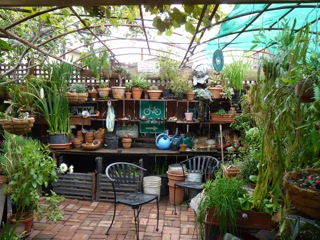
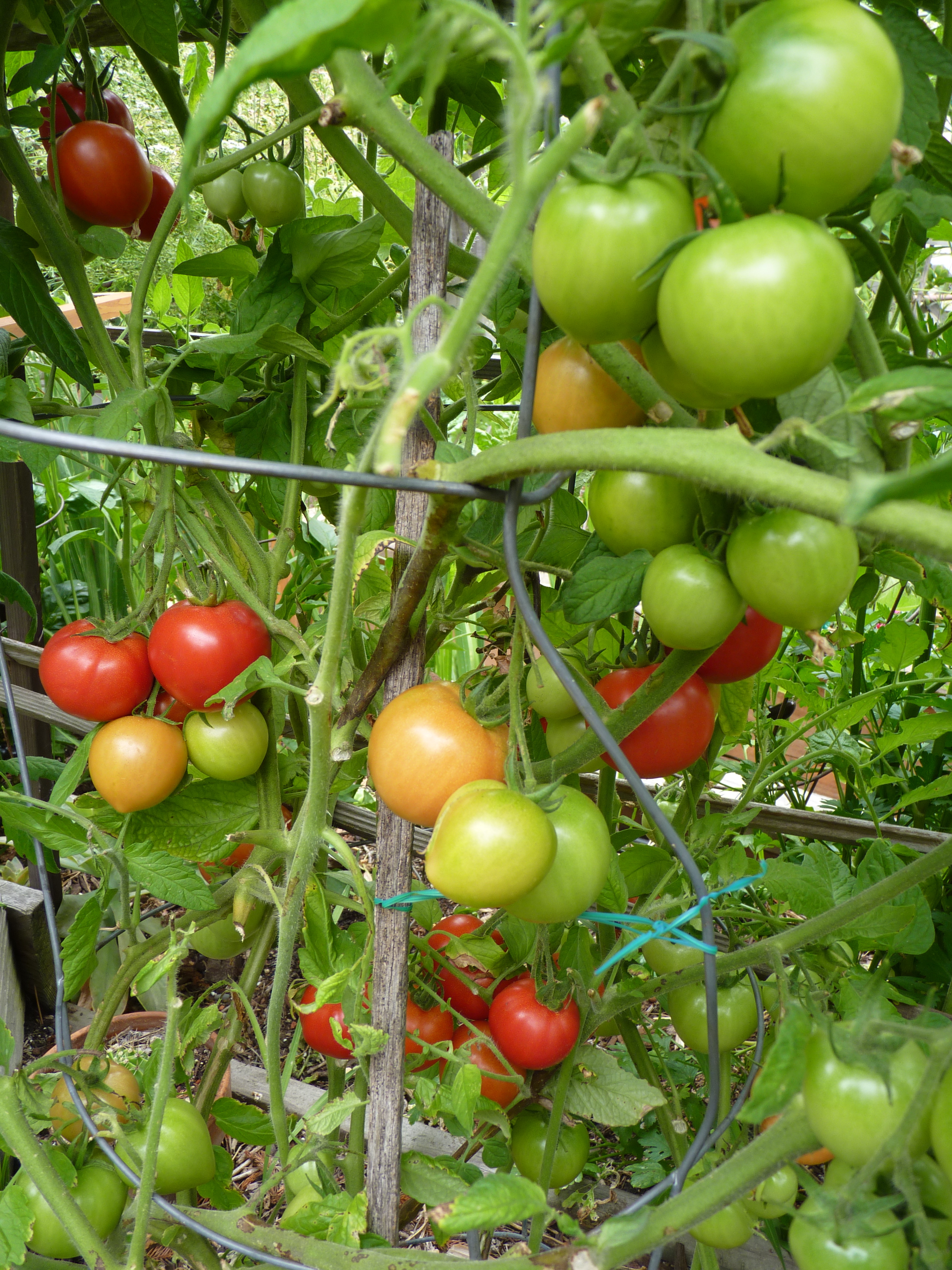
Occasionally I encounter a work of art that broadens my understanding of the universe and makes me realize how much more is happening than I ever imagined. And always, when this occurs, I feel a little smaller and a bit more humble but at the same time I am filled with wonder that so much exists just beyond the fringes of my perception. Art can open pathways to a richer and more meaningful world. When it does, from some magical source, the desire arises to share this new understanding and wonder . And so, after entering Apple’s garden and realizing I was immersed in just such a work of art, a work of intense passion and great effort, my eyes were opened and I wanted to share the experience. There is much to be learned and appreciated.
Micro-gardening is not a new concept but is a subject of great interest these days because accessibility to large plots of land is increasingly limited, especially in urban environments, while the urge to home-grow flowers, fruits, and vegetables has been increasing. I can think of no better way to learn the practice than to study the work of a master. Apple’s garden thrives in a yard 25 feet wide and 40 feet deep surrounded by neighboring walls and fences – a space no different than countless backyards in every town in California – and by applying the principles of micro-gardening this yard has been transformed over 35 years into the most beautifully complex, productive and wholly organic urban farm I have ever encountered. As it evolved, an order emerged with shapes and structures that optimize growth capacity and minimize the effort needed to sustain it. The relationships between the elements in three-dimensional space allow every level to flourish while supported on wood walls and posts and suspended by a gossamer network of stick and wire trellises and arbors. Light is controlled and used to its optimum potential, and water is distributed exactly where and when it will do the most good without waste. Every shred of organic material in whatever form is considered valuable and is ultimately returned to the soil from whence it came through mulching and composting, and for each addition of soil amendment or nutrient brought in from the outside, an armload of fresh vegetables or a freshly potted plant is taken out – a perfectly balanced system. Aeration, drainage, and composition of the soil are carefully tended throughout a myriad of micro-environments by using drip-irrigation, mixing stations, tiered planters, and an array of turning and raking tools. The garden is populated by hundreds of busy insects helping to maintain some natural balance which seems to make everything healthier. There are no poisons and no weed killers. And all this has been accomplished with an aesthetic flourish which suffuses the entire backyard in a timeless and enchanting aura. If you are interested how this all came about, check out these photographs and read on.
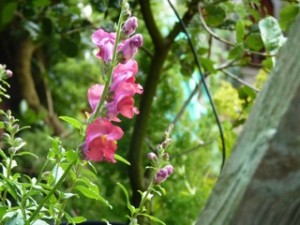
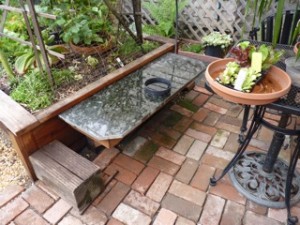
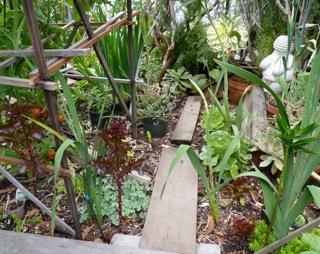
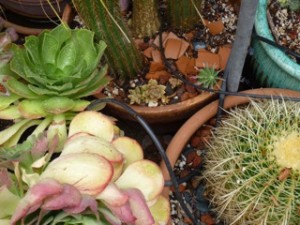
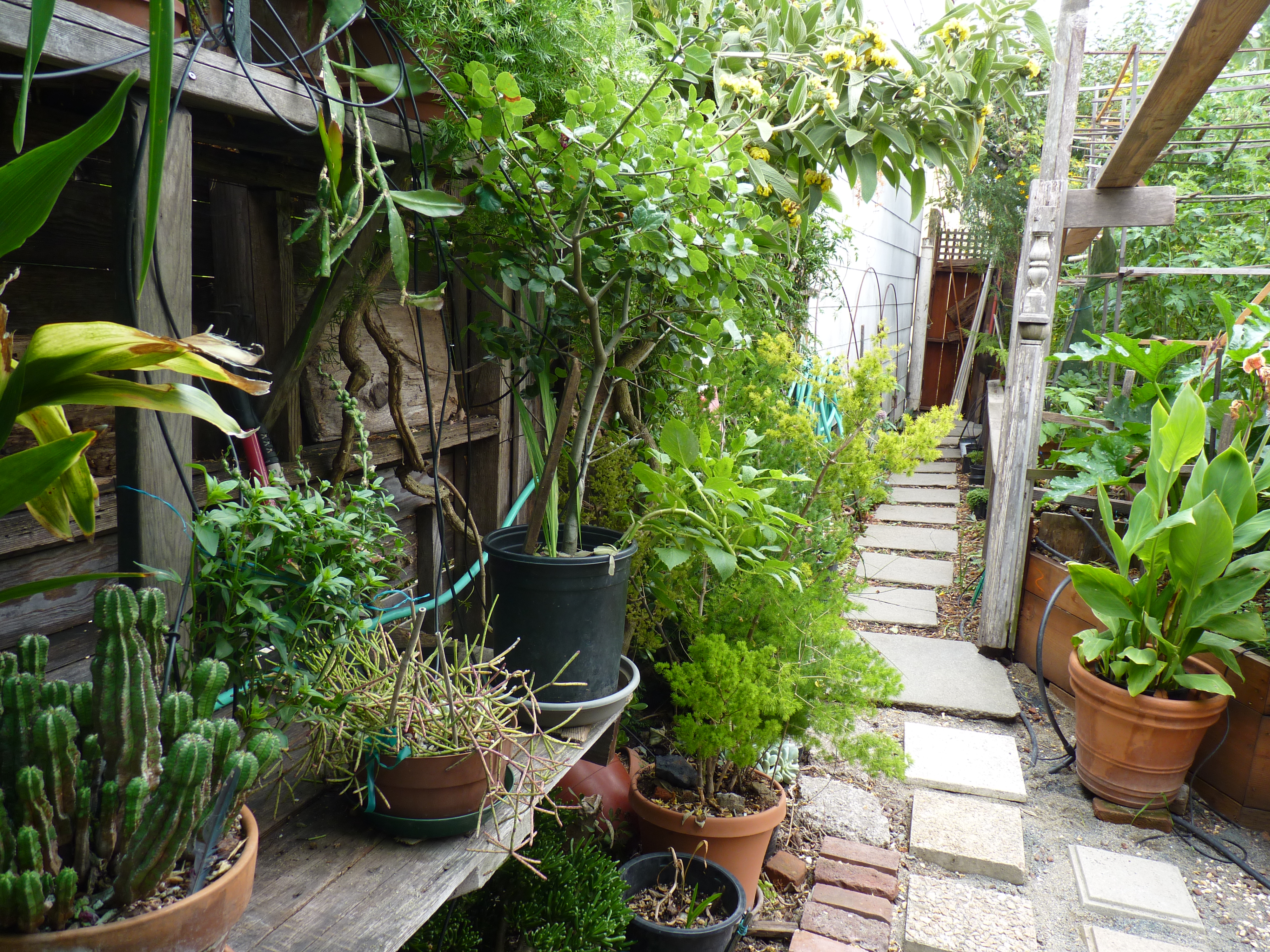

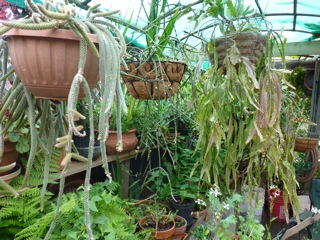
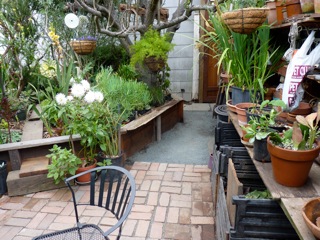
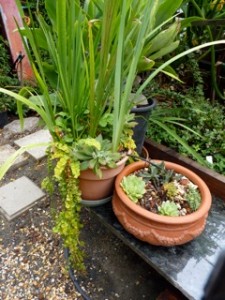
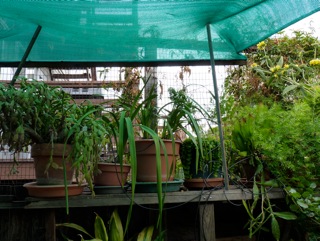
Standing in Apple’s garden you can’t help but notice the tiered and terraced raised-bed planters and potting shelves. They’re everywhere! From the lowest levels of the gravel and brick pathways, wooden retaining structures emerge to contain the growing beds and define the overall layout of the yard. The smallest of these is only three inches high, rimming a narrow walkway adjacent to the neighbor’s fence and creating a small strip planter, while the largest of them is nearly two feet tall, buttressed by 4 inch by 4 inch redwood posts which in a few places extend up to ten feet high. Between these extremes are boards 6 inches, 8 inches, and 12 inches tall; some of them standing alone at ground level and others stepping back from and rising above the larger beds which support them. The result is a multi-level planting surface up to three feet above grade which offers ideal rooting conditions for nearly any flower or vegetable and working heights that are EASY on the back. Around the periphery,against the walls and fences, shelves have been built upon which are supported dozens and dozens of pots and trays, all filled with healthy plants. The structures support growth from ground level to well above one’s head in a vast assortment of environments.
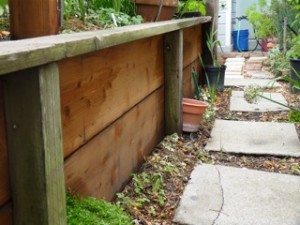
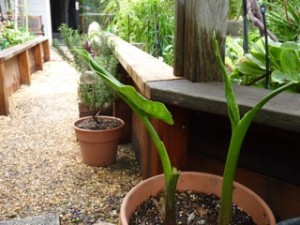
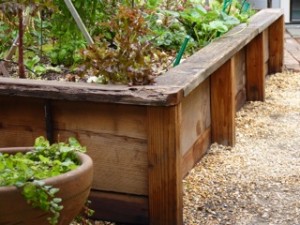
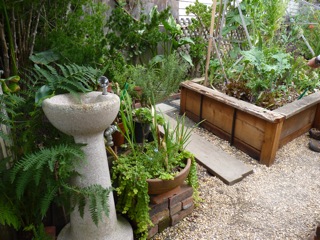
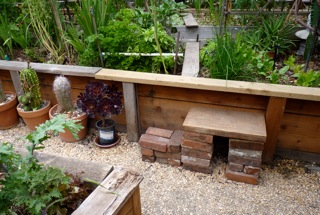
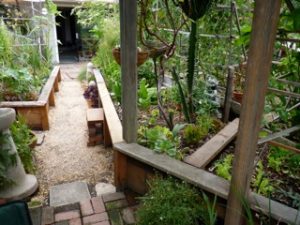
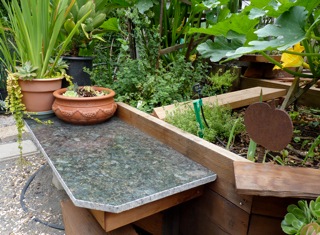
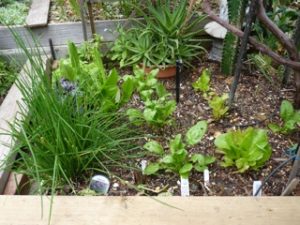
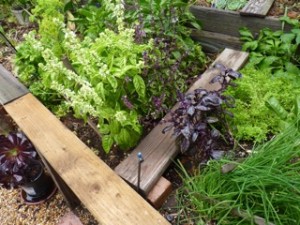
One of the beauties of using wood boards for the retaining structure is their ready availability. Another is the fact that they eventually turn to compost themselves and don’t inhibit growth. They are relatively light weight and can be easily cut to any size.
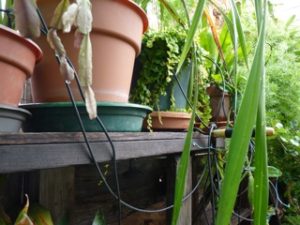
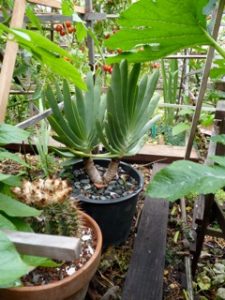
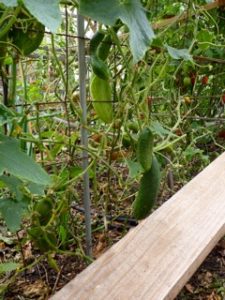
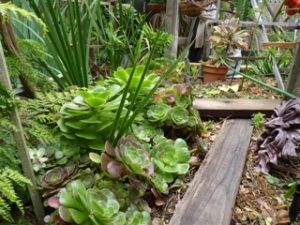
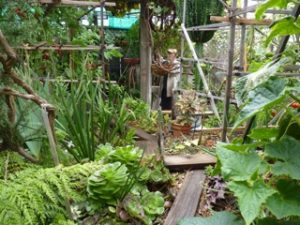
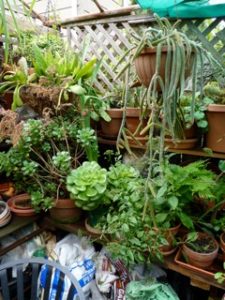
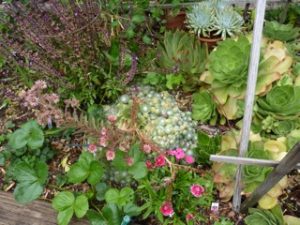
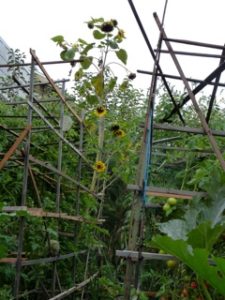
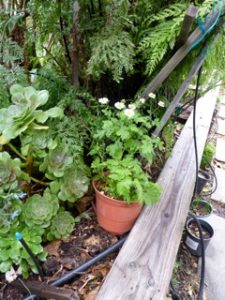
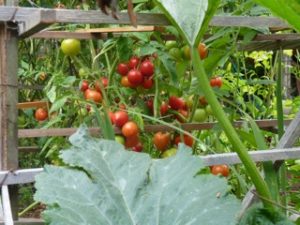
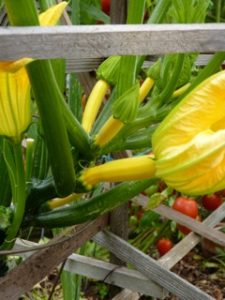
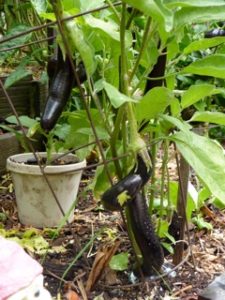

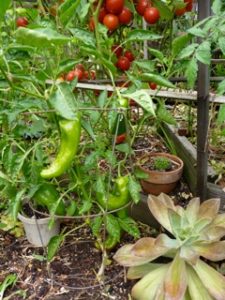
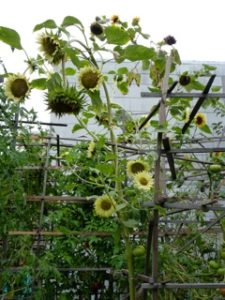
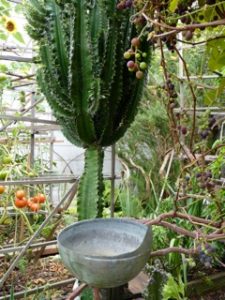
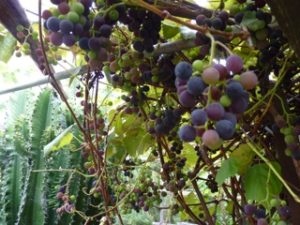
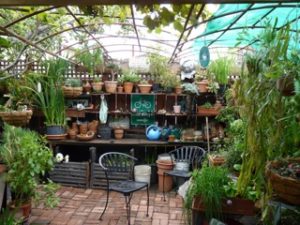
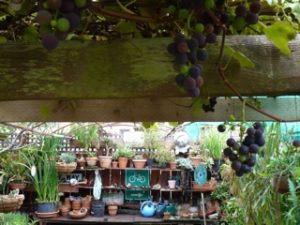
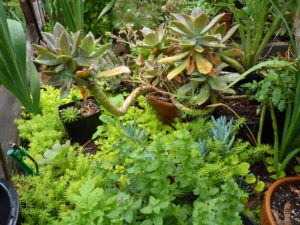
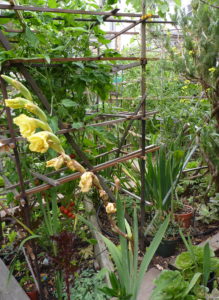
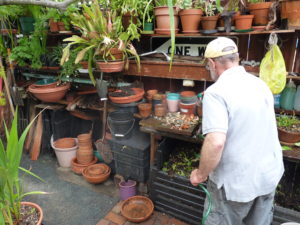
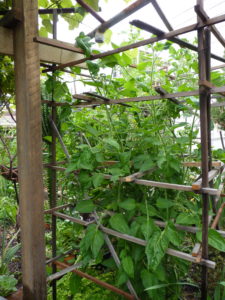
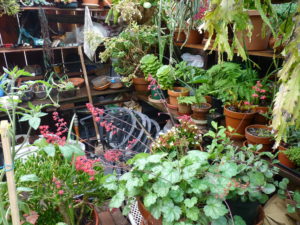
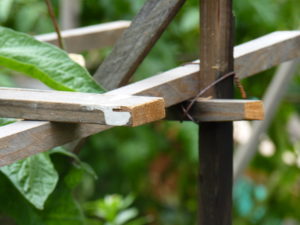
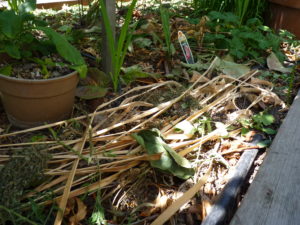
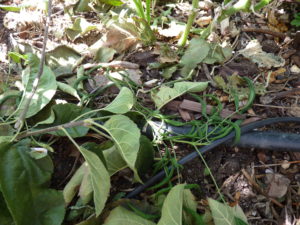
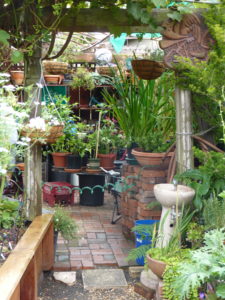
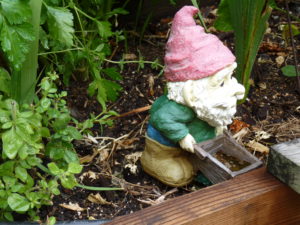
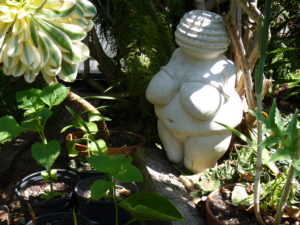
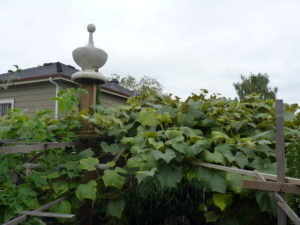
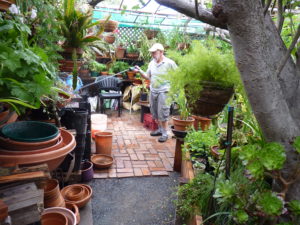
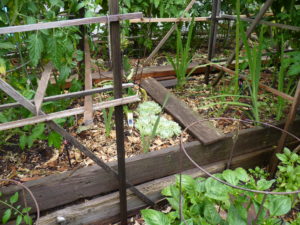
Advertise
Dolor slit, sed do eiusmod
Navigation
Dolor slit, sed do eiusmod






























































